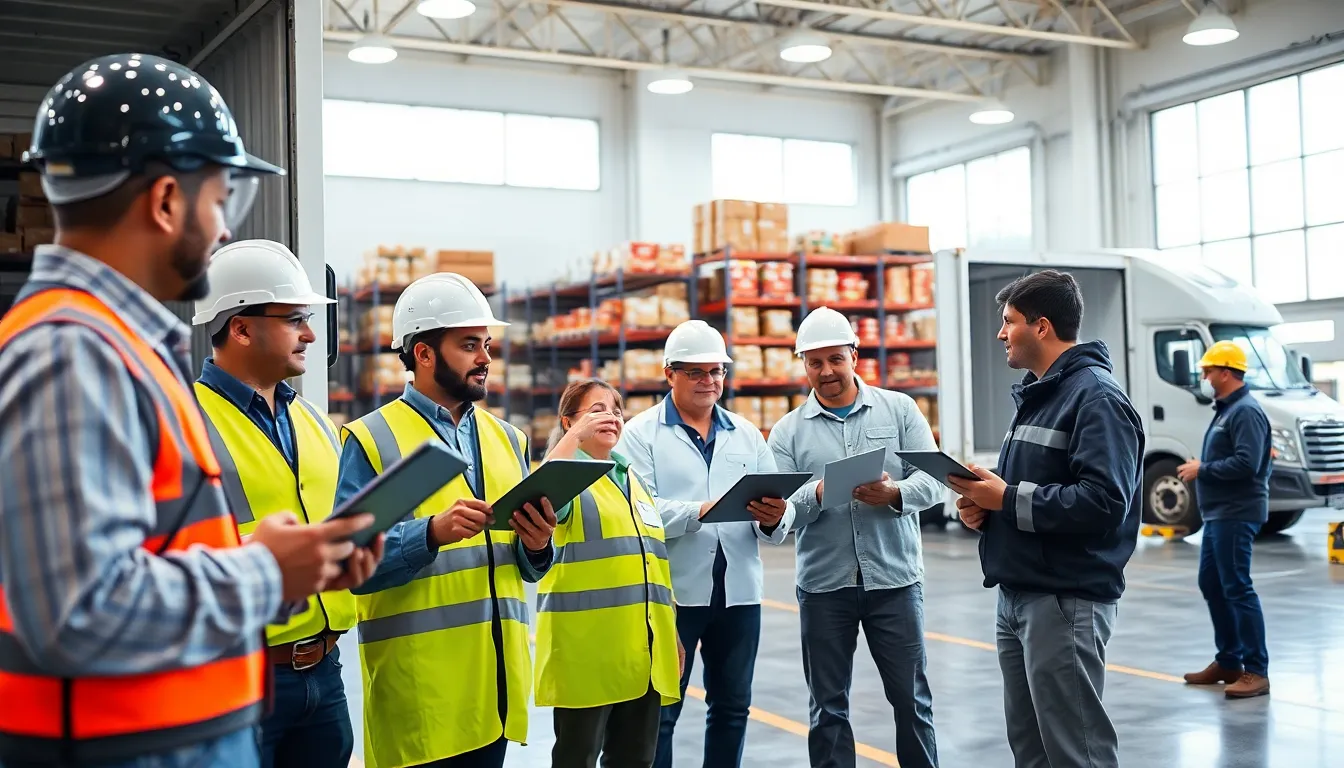When it comes to food, safety should always come first. Picture this: a delicious batch of lasagna on its way to a local restaurant, but somewhere along the route, everything goes sideways. Suddenly, that culinary masterpiece risks turning into a bacterial buffet. Food safety transportation standards are in place to prevent this kind of disaster, ensuring that meals remain both delicious and, most importantly, safe to consume. In this text, we’ll peel back the layers on the significance of these standards, the regulations backing them, and the best practices that keep food safe from farm to table. Get ready to navigate the sometimes murky waters of food transportation like a seasoned captain.
Table of Contents
ToggleThe Importance of Food Safety in Transportation

Food safety during transportation is crucial because it protects consumers and safeguards public health. The journey from farm to fork can be littered with hazards, be it temperature fluctuations, contamination, or improper handling. Ensuring that food remains safe in transit not only prevents illnesses but also enhances the credibility of suppliers and distributors.
If food safety measures are neglected, the consequences can be severe. Outbreaks of foodborne illnesses can prompt recalls, damage a brand’s reputation, and even lead to legal repercussions. It’s not just about keeping people safe: it’s about keeping the trust of the consumers intact.
Besides, many consumers are more health-conscious now than ever. They demand transparency and are increasingly aware of the ‘where’ and ‘how’ of their food’s journey. Hence, a robust food safety transportation standard is more than just a legal requirement: it’s a competitive edge.
Key Regulations Governing Food Transportation
Food transportation is governed by a complex web of regulations that vary from country to country. In the U.S., the Food and Drug Administration (FDA) lays down the law with The Food Safety Modernization Act (FSMA). This act places a strong emphasis on preventing contamination rather than simply responding to it. Also, the USDA oversees the transportation of meat, poultry, and egg products, ensuring compliance with safety standards.
Key regulations include:
- HACCP (Hazard Analysis and Critical Control Points): This systematic preventive approach requires operators to identify hazards and carry out controls at critical points.
- Sanitary Transportation Rule: This regulation requires that food transporters maintain hygiene during the transport process and emphasizes the importance of maintaining proper temperatures.
- State Regulations: Many states deploy their own guidelines that expand on federal regulations, adding an additional layer of compliance.
Understanding these regulations is essential for businesses involved in food transportation, as non-compliance can result in significant penalties.
Best Practices for Safe Food Transportation
Mitigating risks during food transportation hinges on implementing best practices. Here are a couple of key areas where businesses can excel:
Temperature Control During Transportation
Maintaining the right temperature is vital in food safety. Agencies recommend keeping cold foods at or below 40°F and hot foods at or above 140°F. Temperature-controlled vehicles, also known as reefer trucks, can help achieve this, but operators must use temperature logging devices to ensure compliance throughout the transit.
Sanitation Practices for Transport Vehicles
A clean transport vehicle is the first line of defense against contamination. Regularly cleaning and sanitizing trucks, trailers, and containers prevents the spread of bacteria. Companies should also educate their staff on hygiene practices, providing regular training sessions to reinforce the importance of sanitation.
Packaging Standards for Food Safety
Food packaging is a critical component of food safety during transportation. Packaging not only protects food but also extends its shelf life by preventing contamination. Here are key standards to keep in mind:
- Material Integrity: Packaging materials should be suitable for the type of food being transported. For instance, perishable items require airtight packaging to maintain freshness.
- Labeling: Clear and accurate labeling ensures that handlers are aware of any special handling requirements, including temperature controls and allergen information.
- Tamper-Proof Features: Good packaging includes tamper-evident designs to alert consumers if a product has been compromised.
Also, using sustainable materials can contribute positively to a company’s image without compromising safety.
Challenges in Food Transportation and Safety
While regulations and best practices exist, several challenges continue to plague the food transportation industry.
- Driver Training: Lack of knowledge can lead to poor handling practices that compromise food safety. Regular training programs can bolster driver awareness and competency.
- Temperature Fluctuations: External factors such as weather conditions can impact temperature control. Implementing real-time temperature monitoring solutions can help preemptively address this issue.
- Supply Chain Disruptions: Events like natural disasters or pandemics can disrupt food supply chains, complicating compliance with safety standards.
Solving these challenges requires a concerted effort from all stakeholders involved in the food supply chain.
The Future of Food Safety Transportation Standards
The food transportation sector is undergoing a transformation driven by technology and consumer expectations. Smart logistics solutions, such as IoT devices, are increasingly used to monitor temperature and humidity levels in real-time, allowing for rapid responses to deviations.
Also, as sustainability becomes a significant concern globally, many companies are shifting towards greener transportation methods. This includes utilizing electric or hybrid vehicles to reduce carbon footprints. Transparency will also play a critical role in the future: consumers are demanding access to information about their food’s journey, prompting companies to invest in blockchain technology for traceability.
Adapting to these changes is not only beneficial for compliance but beneficial for business.
